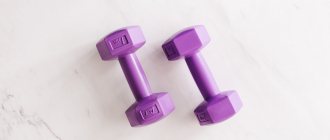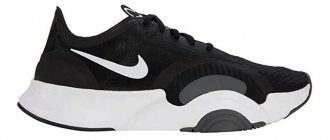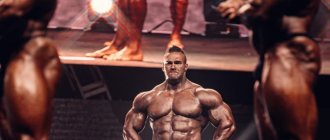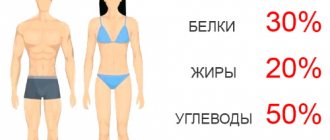© New Africa - stock.adobe.com
Share:
Today you won’t surprise anyone with a simple strip of fabric on your hand. Almost everyone has an Apple Watch, Samsung Gear or other smart gadget that will count your pulse, tell you the time, and go to the store for you. But at the same time, many people forget that wristbands are the same once popular strip of fabric that has a completely different function, not at all related to beauty. Rather, it determines the safety of athletes. Let’s take a closer look at how to choose the right wristbands and why they are needed.
What are wristbands for?
In the fashion world, wristbands serve a simple role. This is a decoration (accessory) that people put on their wrist. They can be made of leather, fabric or metal. In addition, wristbands are decorated with various stones and patterns. There are even companies that create individual wristbands so that they blend harmoniously with a person’s overall clothing style .
In the sports field, wrist cuffs play a completely different role. Athletes use them mainly if there is a serious load on the wrist or hand, and these elements perform three functions at once :
These three features have made wristbands an indispensable item in the world of sports.
How do wristbands work during treatment?
In addition to fashion and sports, wrist cuffs are intensively used in medicine. Their positive properties have been proven a long time ago, but only in our time have elastic bandages become so popular.
Sprains, arthritis, joint pain, varicose veins and many other diseases require protection of the affected area on the human body.
In such cases, elastic bandages come in handy.
Sometimes the bruised area is rubbed with a special medicinal ointment, and then the area is wrapped with an elastic bandage to keep it warm. Modern technologies have made it possible to create elastic wristbands that combine these two actions into one. We are talking about wristbands with biophotons . The unique element emits biowaves that have a beneficial effect on the human body, which significantly speeds up the period of healing or restoration of the affected area.
Heavy BB Wrist Wraps
These durable wristbands were developed in close collaboration with professional athletes. The model is presented in two versions: 18" (46 cm) and 24" (61 cm).
The Heavy Better Bodies Wrist Wraps 24″ are stiff enough to provide optimal support and stability during grueling workouts, yet versatile enough to be your daily workout companion.
If you have narrow wrists or prefer a little less support, check out the Heavy Bodies Wraps 18″ .
Length: 46 cm / 61 cm Composition: 60% cotton, 40% rubber.
Types of wristbands
There is a wide variety of wristbands and they all differ depending on the purpose of use:
According to their functionality, cuffs are divided into two types:
Depending on the goals, each athlete chooses a wrist cuff himself. For example, in some sports, an electronic product is necessary, because in the rush of training, sometimes a person simply does not feel the deterioration of his condition. An increase in blood pressure or heart rate ultimately has a negative impact on the athlete's general condition .
Who else wears wristbands?
Recently, more and more things are being used for purposes other than their intended purpose. Wristbands also fall into this category. Now it is not only sports equipment, but also a fashion accessory. Wristbands are worn by representatives of various youth subcultures and simply active young people. The wristband complements the image, emphasizes individual style and draws attention to the owner of this accessory. You can show your imagination and decorate the wristband in an original way. You can use anything as decoration: embroidery, leather appliqués, stones, rhinestones, etc. This handmade wristband will be a wonderful birthday gift, especially if you embroider a name, date, some phrase or wish.
Very often, athletes have a wristband on their wrist. The product is made of elastic fabric in appearance and resembles a wide cuff. Today, young people prefer to wear such an accessory to create an unusual look. Why do you need a wristband, is it really just to complement the look? This is not the case at all, which is why athletes use this piece of equipment for certain functions.
How to choose the right wristband?
How to make a wristband or choose the right option on the market? It’s simple, because the main thing is to determine the main purpose of this accessory. If we are talking about style, then cuffs are chosen according to the color and pattern that will match the main things.
In the field of sports, wristbands
are chosen based on material , without paying attention to appearance.
Leather is suitable for direct loads on the wrist, while the knitted version is better suited for people involved in sports where the hands move more. When choosing, it is important to pay attention to the size of the product, because it should not pinch your hand and interfere with normal blood circulation. If there is no suitable size or type of cuff, you can easily make them yourself.
Meaning
The wristband was not invented to improve the appearance of athletes. It can perform various functions, which differ in individual sports. For this reason, before making such an item, it is taken into account what sport its future owner will engage in.
Many people do not understand why wristbands are needed. They are used for strength or dynamic work, in which the main load is placed on the wrist joint.
The use of this accessory contributes to:
Wristbands can be of different types, which depend on the nature of the sports activity being performed.
What is a wristband and what is it for?
The name speaks for itself - it is a bandage worn on the arm in the area where the pulse is felt. This is not the same as an elastic bandage. The latter fixes the joint until it becomes completely immobile, and is used after injuries and for various inflammatory processes. The wristband does not affect mobility, wraps around the wrist without exerting pressure, and performs completely different functions.
At first, arm cuffs, like knee pads, were worn only after an injury had been acquired. This provided protection against re-injury and promoted proper bone healing. Today this attribute is used both in sports and in other areas where the wrist joint experiences increased stress.
Its main functions are:
Cuffs are usually used only during training. At competitions, perhaps only marathon runners need them to wipe away sweat.
What types of wristbands are there?
The entire variety of products of this type can be divided into 3 groups:
Areas of application of equipment
First of all, a wristband is necessary for athletes of strength and cyclic disciplines. In crossfit, weightlifting, bodybuilding, etc. Leather products are used to securely fix the wrist joint and protect against injury. After completing the exercise, such a cuff should be removed, otherwise the blood supply to the hand may be disrupted. In addition, this equipment increases the athlete’s performance by an average of 2.5-5 kg. Therefore, in powerlifting, the length and width of the wristband are strictly regulated: 1 m x 8 cm.
For runners, a wrist band helps wipe sweat away from the forehead and also provides much-needed warmth to your joints. This is important because an athlete's hands have a significant impact on speed.
Cuffs are also used in martial arts, such as boxing. They are sewn from elastic fabric that holds the hand in one position without affecting mobility.
The useful functions of the wristbands allow you to use it not only in sports. Thus, a wrist joint brace is necessary for musicians (pianists, guitarists, drummers), since the load that occurs when playing instruments rests entirely on the hand. The latter must remain mobile and warm, otherwise complications may arise in the form of arthrosis and complete wear of the joints.
Programmers also need the correct hand position. And the point is not that the joint is under heavy load, but that it is located unnaturally. This, in turn, can affect your health.
Traction straps
It's just two strips of fabric. They are used by athletes who lift heavy weights, such as a barbell.
Elena:
Deadlift straps are used to redistribute the load when performing exercises with barbells and dumbbells. You can hold the weight in your hands and not worry about it slipping out of your hands. However, an incorrectly wound strap can cause wrist injury.
Photo: istockphoto.com
The fabric from which the accessory is made is dense and does not tear. There are three types of straps: traction loops, webbing, and hooks. The choice of one or the other depends on the complexity of the exercises you are going to perform. To avoid injury, you need to choose what's right for you.
It should be noted that straps are not allowed in powerlifting, but if you are a beginner or an amateur athlete, they will help you gain strength and muscle size. The straps allow you to hold the dumbbell for a long time, so you can work the target muscle group.
Characteristics
The sports wrist cuff has several basic parameters that allow you to choose a particular product in accordance with the purpose of use.
Material of manufacture
This is the main characteristic. Leather cuffs have a longer service life and are intended for sports that involve working with heavy weights. The ideal option is a wristband made of tanned leather, but they are difficult to find on the Russian sporting goods market.
A pile headband is suitable for any discipline, except for heavy ones. For the latter, they do not create the necessary degree of fixation. But they perfectly retain the heat of the joints, so they will be an excellent choice for those who value this property.
Fabric and elastic cuffs, made of cotton and synthetics, respectively, have a low degree of fixation, but are easy to clean. They are great for running and team play
Size
The wristband should always fit strictly in size for 2 reasons:
Deciding on the size is easy: you should measure your wrist in the narrowest area. The size of the wristband may differ from this figure by a maximum of 1 cm up or down. Manufacturers develop a specific size grid for their products, which allows you to quickly select the right one.
Rigidity
This characteristic applies only to bench press wristbands. Different sports equipment companies define stiffness differently. Therefore, you should familiarize yourself with this indicator in the product description - it indicates both the stiffness value and the purpose of the cuff (for beginners or professionals).
How to choose wristbands
To purchase an accessory that meets all the necessary requirements, you need to follow some simple recommendations:
It should be borne in mind that the highest quality products are produced by well-known companies. However, this is not the main selection criterion - you can buy cuffs cheaper than the original, but at the same time meeting all the necessary requirements.
The choice of wristband is also influenced by the presence/absence of injuries. To prevent possible damage, a simple elastic bandage is enough. If the injury has already been sustained, it is necessary to use a medium-hard cuff that limits the mobility of the joint.
Contraindications
Wearing cuffs is not recommended when:
How to use
Please read the included instructions carefully before use as they contain important operating and maintenance instructions. You can wash the bandages only by hand, in cold or warm water. The use of bleaching agents is prohibited. Do not iron the cuffs with an iron or stretch it unnecessarily. You need to dry the washed item without hanging it, laying it out on a horizontal surface.
The wristband is a very useful accessory for sports and more. Its value is higher, the more risk factors for the wrist joints. Therefore, when doing strength training, it is better to use this product and not worry about the risks.
Source
Major manufacturers of wristbands
On the Russian market you can find a huge selection of wristbands produced under different brands. There are companies that specialize only in the production of braces to improve training safety and post-traumatic recovery. Thus, the American company Fosta produces a lot of technical protective equipment, including wristbands. This brand produces products and goods for sports and medical rehabilitation, known throughout the world.
Wristbands from the following manufacturers also have excellent reviews:
- LP;
- ORTO;
- Orlett:
- Medi;
- OPPO.
The cost of a sports wristband depends on its model and the material from which it is made. The more complex the design and more functionality, the higher the price tag. If we take average figures, a bracelet will cost from 200 to 1000 rubles, a wrist brace - 500-2000 rubles, sports gloves - 300-2000 rubles.
Why are wristbands needed in sports?
In modern sports, there are many auxiliary devices and devices that increase efficiency and make training easier. One of these attributes is a wristband, known even to those who do not play sports. The device is often used as an accessory, but its direct purpose is far from aesthetic pleasure.
A wristband is a bandage on the arm in the wrist area made of knitted materials, sometimes with the addition of special components that improve them for a particular sport or activity.
BB Womens Wrist Wraps
An essential accessory for all gym enthusiasts. Stylish and durable, the wristbands are made from premium two-line material that provides a secure fit without being restrictive. Features comfortable thumb loops and durable Velcro closure for a secure fit.
Length: 33 cm Composition: 80% cotton, 20% rubber
Wristbands GASP World Off Wrist Wraps, Snow Camo
As they say, don't fix what isn't broken. How about making it cooler? GASP has been developing, manufacturing and testing wristbands since before its founding. Together with Guy Cisternino , one of the hardest working athletes in the iron world, GASP created cool wristbands without sacrificing quality of movement. Combining his knowledge with Guy's experience and hard work, GASP introduces World Off Wrist Wraps !
Length: 45 cm Composition: 80% cotton, 20% rubber
What are sports wristbands for?
The invention of the wristband has nothing to do with the idea of improving the appearance of athletes. The attribute performs certain functions, which differ in individual sports. Therefore, when making a special armband, it is taken into account what sports discipline the owner will engage in.
The use of wristbands is necessary where active dynamic or power work is performed, during which a large load is placed on the wrist joint. Using the equipment attribute allows you to:
Using a wristband will help maintain joint temperature while resting between exercises. This is especially important for artistic gymnastics and weightlifting.
The attribute is used mainly during training sessions and less often during competitions. The use of a wristband in competitive activities is often typical for marathon runners in order to remove perspiration from the forehead.
Wristbands GASP Branch 18″ Wrist Wrap
A must-have for hardcore powerlifters! 18" wristbands designed without compromise in collaboration with IFBB Pro
. Provides a secure fit during weightlifting.
Size: 45 cm Composition: 80% cotton, 20% rubber
Types of wristbands
All paraphernalia is divided by type of sports activity. Wrist bandages are also divided into disciplines and differ depending on the nature of the activity performed by the athlete.
Knitted wristbands are mainly used in athletics, particularly in running and some sports games. Such bandages are tightly attached to the hand in the wrist area due to the tight material. Despite their elasticity, headbands are made in different sizes, so it is recommended to try them on before purchasing. Important! The wristband should fit tightly on your hand and lightly squeeze your wrist; its presence should be constantly felt. Often, manufacturer's brand logos are applied to knitted headbands.
Leather ones are used in weightlifting and martial arts, where the load on the wrist joint is of a forceful nature. The purpose is the same as that of knitted headbands. However, leather wristbands fix the joint more rigidly due to the tightly pliable material. The use of a leather bandage is advisable not only during training, but also when recovering from an injury.
Amateur athletes often use wristbands with pockets in which it is convenient to hide keys or a record player.
There are also electronic wristbands, often called fitness bracelets. They differ from conventional headbands in that they have additional functions for monitoring the condition of the exerciser in the form of pulse and pressure.
However, the protective function of the joints of this attribute is reduced due to its compactness and unsuitable material.
Why do you need wrist straps when playing sports?
The wrist has a complex structure that gives it high mobility. In people who are actively involved in sports, the wrist joint is an area of increased risk for various types of injuries (from minor sprains to serious injuries that require surgery). A wrist guard is a great way to protect your hands while you exercise.
It is a bandage that, due to its design, tightly fixes the joint, provides additional support for active muscles, providing improved mobility of the arms and without interfering with the required movements. This bracelet partially reduces the impact on the joint during sudden movements and impacts, protecting it from overload and injury.
This is one of the most important wrist protection measures during training related to athletics, martial arts, sports, fitness and other sports.
A wristband is essential for those who perform strength training. This is one of the best ways to improve your performance. In addition, the wristband exerts a compressive effect on the joint, forcing blood to flow to the limb. This improves muscle function, reduces fatigue and pain during active training, and increases the flexibility of tendons and ligaments.
Using a wristband helps keep your hands healthy for a long time. In addition to athletes, these products are recommended for people whose field of activity involves a lot of stress on their hands.
These include:
- builders and loaders;
- programmers and office workers who spend a lot of time at the computer;
- musicians (especially pianists);
- writers and artists;
- drivers;
- seamstresses
In addition, wristbands can be indicated for anyone with damage to the joints of the hands or inflammatory processes in them (for example, osteoarthritis, arthritis, tendonitis, paresis or paralysis). When the wrist is fixed, the recovery process is much easier. Since the person does not make unnecessary movements, pain and swelling subside faster.
Benefits of using a wristband
The wristband makes your workout much more effective. By tightly securing the joint, it partially reduces the load on the arm during high physical activity. Using a wristband, you can improve your athletic performance while reducing the risk of injury to ligaments or muscles.
The sports wrist band allows you to achieve the following benefits:
- increase training efficiency;
The sports wristband can increase the effectiveness of your workout. - reduce the fatigue of trained muscles and the intensity of pain in the wrist;
- make ligament flexibility much better;
- ensure improved blood circulation in the hands;
- reduce the impact on the wrist joint, relieve swelling and tension in this area;
- protect the joint and prevent injury.
It is impossible to do without a wristband during intense exercise and during sports competitions. This is an effective device that allows you to protect the joints and ligaments of the hands from tears and sprains, as well as dislocations that occur during unsuccessful movements and falls during sports. In addition, if there is already an injury to the wrist, the wristband helps to quickly restore injured tissue, significantly speeding up recovery.
How to choose wristbands
The correct choice of a wristband suggests itself when there is a specific purpose for its use. Of course, if an accessory is purchased with the intention of using it in running training, then it should be made of knitted material. It's the same with other sports.
However, when choosing the obvious, you can also make a mistake. Therefore, in order to eliminate the possibility of error and the choice fell on the required wristband, be guided by the following conditions:
The highest quality wristbands are produced by well-known brands producing sports equipment. However, a bandage of suitable quality can be found for less than the original cost.
Running wristband
The use of a wristband while running is due to the need to promptly remove sweat from the forehead, which can get into the eyes. Since the composition of sweat determines its saltiness, its contact with the eyes will cause a stinging sensation.
The running headband acts as a miniature towel that a runner can use while training or running a race. This is especially convenient for long-distance races, when there is no time to wash.
When choosing an accessory, please note that it must be made of knitted material. The composition of the material is also important because when you run, your skin's pores open up, and wiping away sweat with a rough or unpleasant bandage can cause irritation.
Source
Why are wristbands needed in sports?
Today you won’t surprise anyone with a simple strip of fabric on your hand. Almost everyone has an Apple Watch, Samsung Gear or other smart gadget that will count your pulse, tell you the time, and go to the store for you. But at the same time, many people forget that wristbands are the same once popular strip of fabric that has a completely different function, not at all related to beauty. Rather, it determines the safety of athletes. Let’s take a closer look at how to choose the right wristbands and why they are needed.
What are they for?
In order to most easily explain why wristbands are needed, we need to draw an analogy with knee pads. Initially, these strips of tissue were applied to stabilize joints during serious injuries. Such fixation made it possible to properly heal a broken bone or carry out prevention so that a person would not accidentally repeat or aggravate his injury.
Subsequently, people appreciated the possibility of fixing one of the most mobile joints in humans – the wrist. Since then, sports wristbands have begun to be used in many areas:
And then, when almost everyone around us started wearing wristbands, they gained a second wind, becoming a fashionable and rather pointless accessory.
Musicians
Why do musicians need wristbands? After all, they don’t experience huge loads, don’t do bench presses, etc. It’s simple. Musicians (mostly pianists and guitarists) strain their wrist joint much more than it might seem. After all, their entire load is transferred directly to the hand. Bypassing even the wrist muscles. In addition, the brush must be very mobile and, most importantly, must maintain a constant temperature.
Otherwise, musicians can get arthrosis of the wrist joints, since they are almost completely worn out during their professional career. Drummers also need such wristbands for the same reasons.
Wristbands are also worn for working in cold conditions. Musicians, mainly those who play stringed instruments, cannot afford to wear gloves in order to fully warm their hands. At the same time, all the muscles of the palm are attached at the level of the wrist, so proper warming and maintaining their temperature can preserve some of the mobility of the fingers during performance.
For programmers
Programmers also constantly feel the need to maintain the correct position of the hand. And here this is not at all due to the fact that they work the joint a lot. On the contrary, the hand on the keyboard is usually fixed in one position. The main problem is that this position is unnatural. Because of this, the hand, without proper fixation, begins to get used to the new position, which negatively affects its health.
For athletes
Everything is more complicated here, since many athletes use wristbands. People involved in strength sports, be it weightlifting, powerlifting, bodybuilding or CrossFit, mainly use hard wristbands in the form of wrist bandages. They allow you to fix the hand in the correct position, stabilize the hand and reduce the risk of injury (in particular, protect against sprains). They are removed between approaches so as not to block blood access to the hands.
Interesting fact: in powerlifting, bench press wristbands longer than 1 meter and wider than 8 cm are prohibited. But even the permitted options allow you to add about 2.5-5 kg to the bench press.
For runners, the wristband helps maintain the temperature in the hands, making running exercises more comfortable. Especially considering that hand movements also affect speed.
Another useful detail of wristbands for runners is discussed in the following video:
There are also elastic wristbands that are used in martial arts (for example, boxing). They are made of a special material that allows you to fix your hand in one position, but does not interfere with mobility too much (which cannot be said about bench press wristbands).
How to choose?
In order to choose suitable wristbands, you need to clearly understand what you need from them. If it is a fashion accessory, look at its appearance. If you need a wristband for winter jogging, use wool ones; they will perfectly secure your hand and save you from hypothermia. If you press, then choose extremely hard wrist bandages that will not allow your wrist to move, no matter how much you violate the exercise technique.
| Type | Key Feature | Who are they suitable for? |
| Woolen | Best Warmth | Musicians and programmers |
| Simple fabric | Fixation for performing monotonous movements | Everyone |
| Leather | Strengthened fixation of the wrist joint with correct design | Athletes |
| Bench presses | Strengthened fixation of the wrist joint, prevention of injuries | Athletes |
| Cross-country | Fixation of the wrist joint, good warming | For runners |
| Wristbands with heart rate monitor | The built-in gadget measures the pulse (but not always accurately) | For runners |
Material
The most important characteristic is the material. Immediately discard the leather wristbands. No matter what anyone says about their benefits, in terms of palm fixation and warmth, modern leather wristbands are no better or worse than the cheapest fabric ones. It is just a fashion accessory that has greater durability.
Note: we are not talking about wristbands made of tanned leather of special thickness, which are used by foreign athletes as bench presses. It is almost impossible to get them on our market, and in terms of effectiveness, they do not particularly enhance the fixation of the wrist joint in relation to the classic ones.
Next on the list are lint wristbands. This is a universal option that suits almost all categories of people. Their only drawback is insufficient fixation for heavy exercises.
Finally – bench press wristbands. They perfectly fix the hand in the area of the wrist joint, but are not suitable for constant wear and are used exclusively during training sets with serious weights. There are fabric, elastic and so-called power ones, which are usually made of cotton and synthetics. The first two types are not so hard; fabric ones wash well, but do not fix the wrist as well as power ones.
Size
The second important characteristic that determines the importance of wristbands is their size. How to choose the right size of wristbands for a person? Everything is very simple - based on the manufacturer’s size grid. Usually they are indicated in letters, and a table of conversions to numbers is given.
The size of the wristband is the circumference of the wrist at its thinnest point.
Unlike knee pads, wristbands must be taken strictly according to size. It's all about joint size and anchorage. Thus, smaller wristbands of sufficient rigidity greatly block the blood flow in the hand. Too loose ones are of no use at all, except for additional heating. Wristbands should be within +-1 cm of the measurement at the narrowest point of the wrist.
As for hand bandages, they are wound in several layers. The rules prohibit bandages longer than one meter, but you shouldn’t take 90-100 cm, as they stretch over time, which can lead to a violation. And not everyone can withstand such rigidity when wound in 4-5 layers. The optimal option is 50-80 cm for guys and 40-60 cm for girls.
Yoga belt
Yogis also have their own accessories. A belt, for example, is one of them.
Elena:
The belt is used when there is insufficient flexibility and lack of leverage in the arms and legs. It sort of compensates for the difference, and at the same time you can stretch harder. You can get injured if you overdo it, squeeze the blood circulation, or rub the skin with a belt or buckle.
Photo: istockphoto.com
A yoga belt will help “lengthen” your arms and legs. For example, if you cannot reach your feet with your hands while sitting on the floor, then a belt will help with this.
They come in different lengths and colors, from different materials, with and without an adjustable buckle. It is almost impossible to give clear recommendations in choosing this or that device, because in something like stretching, it is important that everything is as comfortable as possible and suits you.











